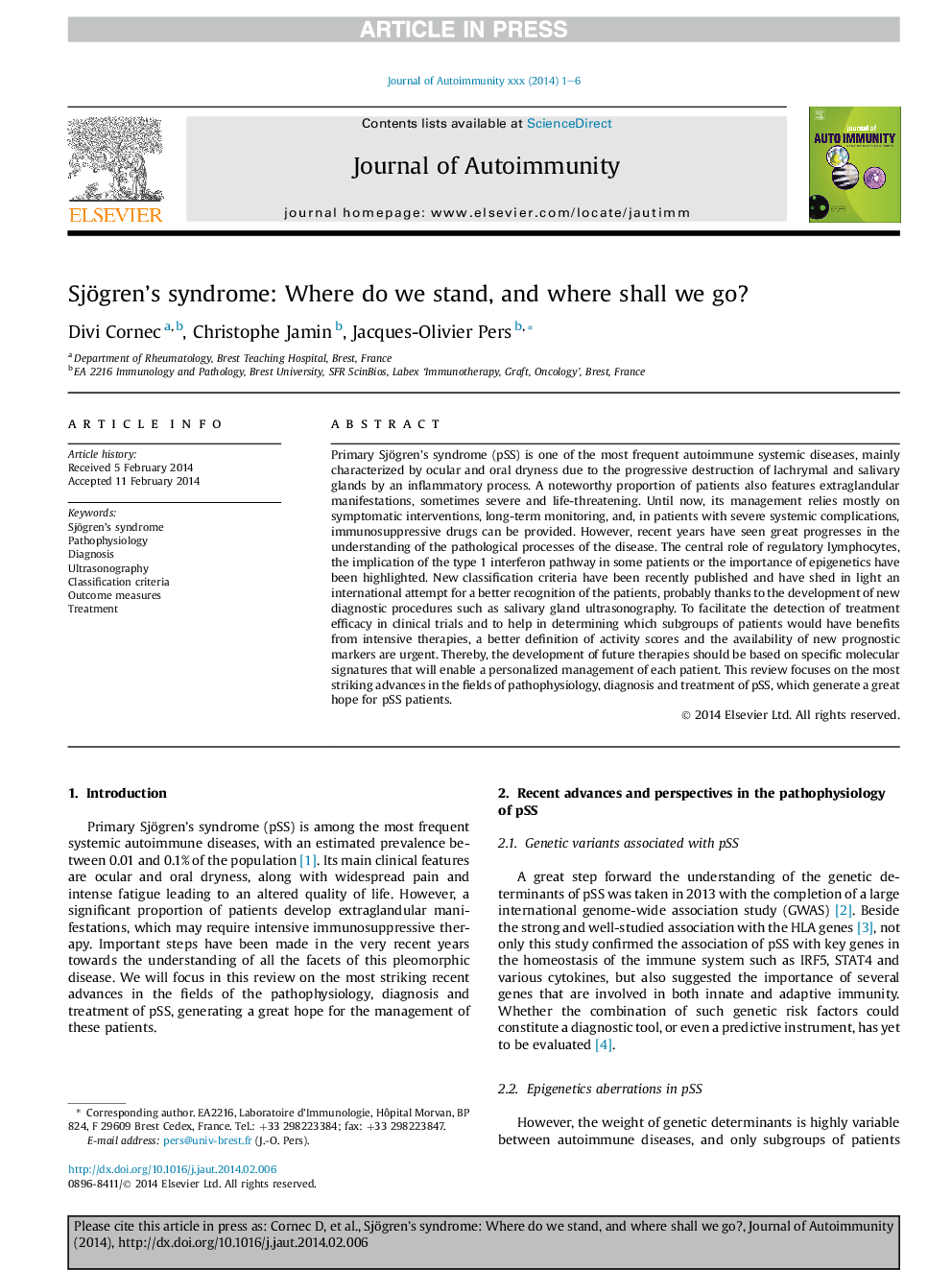| Article ID | Journal | Published Year | Pages | File Type |
|---|---|---|---|---|
| 6119276 | Journal of Autoimmunity | 2014 | 6 Pages |
Abstract
Primary Sjögren's syndrome (pSS) is one of the most frequent autoimmune systemic diseases, mainly characterized by ocular and oral dryness due to the progressive destruction of lachrymal and salivary glands by an inflammatory process. A noteworthy proportion of patients also features extraglandular manifestations, sometimes severe and life-threatening. Until now, its management relies mostly on symptomatic interventions, long-term monitoring, and, in patients with severe systemic complications, immunosuppressive drugs can be provided. However, recent years have seen great progresses in the understanding of the pathological processes of the disease. The central role of regulatory lymphocytes, the implication of the type 1 interferon pathway in some patients or the importance of epigenetics have been highlighted. New classification criteria have been recently published and have shed in light an international attempt for a better recognition of the patients, probably thanks to the development of new diagnostic procedures such as salivary gland ultrasonography. To facilitate the detection of treatment efficacy in clinical trials and to help in determining which subgroups of patients would have benefits from intensive therapies, a better definition of activity scores and the availability of new prognostic markers are urgent. Thereby, the development of future therapies should be based on specific molecular signatures that will enable a personalized management of each patient. This review focuses on the most striking advances in the fields of pathophysiology, diagnosis and treatment of pSS, which generate a great hope for pSS patients.
Keywords
Related Topics
Life Sciences
Immunology and Microbiology
Immunology
Authors
Divi Cornec, Christophe Jamin, Jacques-Olivier Pers,
